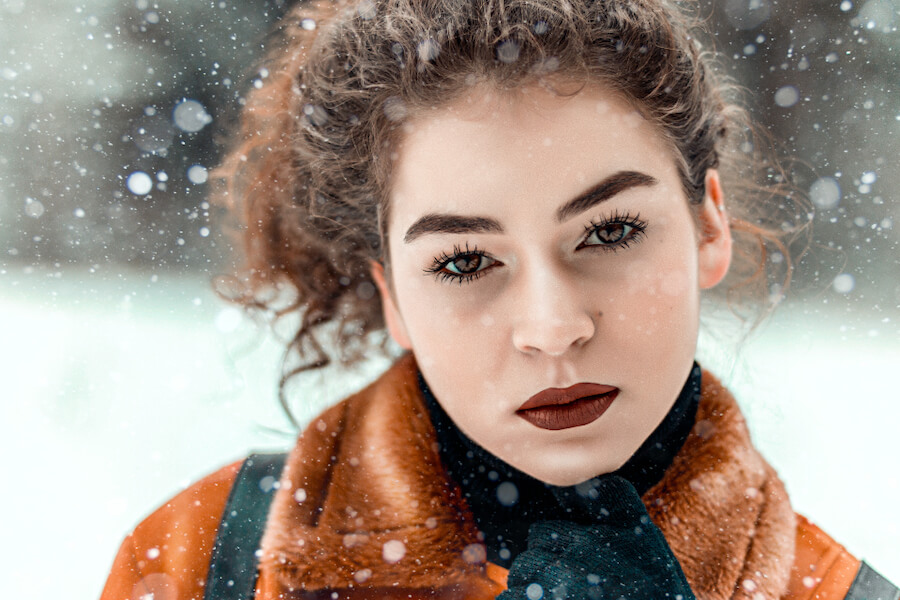Portrait photography is difficult. When you take one, you have to photograph the soul behind your subject. But how can you do that?
Numerous elements affect how your portrait photo looks. You must work on the background, lighting, angles, etc., to take a shot touching everyones heart.
This post will cover all the techniques and ideas for taking a portrait photograph. Lets grab your camera and get ready to capture the moment!
Table of Contents
What Is Portrait Photography?
Portrait photography, also known as portraiture, is a photography concept.
It aims to capture the characteristics of one person or a group of people. The light, poses, and backdrops must be effective to do it properly.
Since the beginning of photography, there has been portrait photography. The daguerreotype, created by Louis Daguerre, appeared in 1839 by Louis Daguerre.
Types
Portrait photographs have the same purpose of capturing the character and essence of the subject. Yet, there are different categories in this concept.
Traditional portraits
In a classic portrait, a subject is a person posing with their face focused on the camera. Photographers often take these pictures in a studio with the aid of set backdrops and studio lighting.
A traditional portrait photograph includes the head and shoulders of the subject. Many people have this image in their minds when talking about portraits.
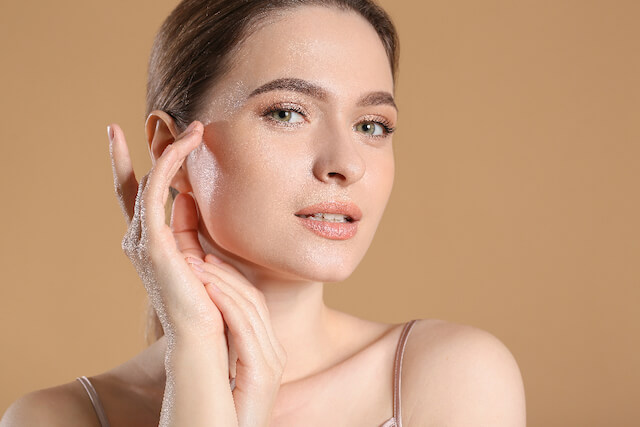
Lifestyle portraits
Lifestyle pictures aim to capture subjects in their natural surroundings.
The vibe of the photo will be more real-life because it doesnt involve much artificial lighting like the traditional style.
To take a lifestyle portrait that is more genuine and successfully portrays the subject in their natural context, a professional photographer usually directs instead of poses.
Environmental portraits
Although the images subject is still the person, an environmental portrait highlights the surroundings. These portraits generally take place in places and settings that are important to the person.
Some people confuse environmental portraits with lifestyle portraits. The difference is that environment photos are more posed than lifestyle ones.
Street portraits
Street photography is spontaneous and random. While taking street pictures involves some planning, the posture or gestures of the subjects are often natural.
Group portraits
These types of pictures incorporate group settings and interactions amongst the subjects to capture a candid image.
Family/group portrait photographers often ask the subjects to play a particular scenario, which brings incredibly candid photos of people.
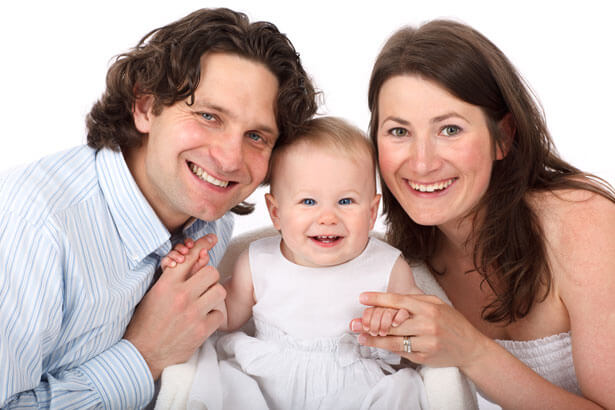
What makes a photo a portrait?
A photograph is a portrait when its elements, like lighting and background, can make viewers feel connected.
Why is portrait photography important?
The emotional bond a good portrait photo can evoke in the viewers makes portrait photography so insatiably popular.
Each of us has feelings. But we can only engage in those emotions more profoundly when we see them through a beautiful portrait.

What Equipment Do I Need for Portrait Photography?
Theoretically, you can take amazing portraits with almost any camera and no accessories. Yet, if you want to improve your game with your photographs, you should invest in a few pieces of equipment.
Camera
Any camera, from a digital one to the tiny camera on your smartphone, can do the trick, bringing a beautiful picture.
DSLR and mirrorless cameras are the best, though. A photographer can control brightness, apertures, ISO, and shutter speed thanks to their customized settings.
Lenses
Do not forget to include standard zoom and telephoto zoom lenses in your bag.
Standard zoom lenses
Standard zoom lenses are incredibly adaptable. You can take full- and half-body pictures at 35-50mm, headshots at 70-mm, stunning environmental shots, and group shots at 24-35mm.
Moreover, by using a standard zoom, you may avoid constantly changing lenses while shooting pictures.
Telephoto zoom lenses
Telephoto zooms are ideal for gorgeous backgrounds and to separate the subject from the scene. They can also help take headshots without having to get close uncomfortably.
Tripod
Using a sturdy tripod, you can set up a portrait shot and have the subject in sharp focus. Then you can focus on the subject and photograph numerous expressions from one angle.
Lighting
Your digital camera should have at least a flash attachment or a speedlight, especially for studio and indoor shooting.
For portrait photography, there are various tools available. Since lighting is an important element of photography, we will discuss it in the next section.
Backdrop
Youll need a simple background while shooting portrait photos in a studio. The general rule for setting the background is:
- Six feet long for a 3/4 length portrait
- Ten feet long for a full-height portrait
Besides, choose materials for the backdrops. Your options include canvas, paper, vinyl, or muslin. Just go for whatever you think can make gorgeous artwork.
How To Take A Good Portrait Photograph?
You have to learn for months or even years to master portrait photography skills. We have compiled some tips to shorten your journey. Lets see what we suggest!
Choose the subject
If your subject is not ready, comfortable, and in their best mood, you cant take good photos even with the highest-quality camera.
Its normal to feel unnatural when photographed. So, as a photographer, you need to make the subject feel at ease.
Make small talk about reducing the tension. Even if you are close with the person, they could still be nervous.
Things are more difficult for child portraits. Try to understand their feelings, tell them it will be exciting, and encourage them to have fun around the camera.
One tip is to ask the person to wear clothes in neutral colors instead of dark ones. These colors help their faces shine in the shot.
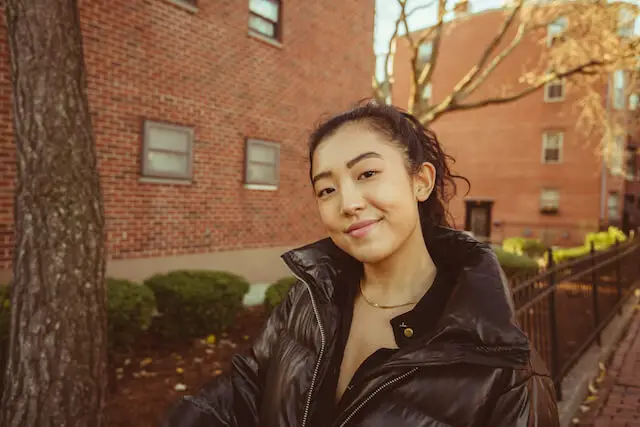
Find the right location.
The photographer can take their photos in a studio or use location scouting to pick a spot outside of the studio.
Photographers will shoot with a plain backdrop. Since they can focus solely on their subject and eliminate any distracting surrounding elements, this option is perfect for traditional portrait photographers.
Taking the photo outside, the photographer can add artistic features to reflect the traits and characteristics of their subject, giving the viewer a deeper understanding of the person.
The photographer always needs to ensure that the key focus is on the subject and not the scenery, regardless of the setting.

Set up the background
You have decided to take the photo indoors or outdoors, but its not enough for the background.
A messy or engaging background will draw the viewers eye away from the subject of your photograph.
Generally, a neutral, uncomplicated background that wont detract the audience is what you want for your portrait photography.
You dont have to use a completely plain background even in the studio, though. Some splashes can work.
Props are a terrific method to fill the background and add interest to the photo. They will also offer an emotional touch if they are personal in character.
When posture doesnt happen naturally, the props can offer additional details about the individual being portrayed and help the subject stay calm.
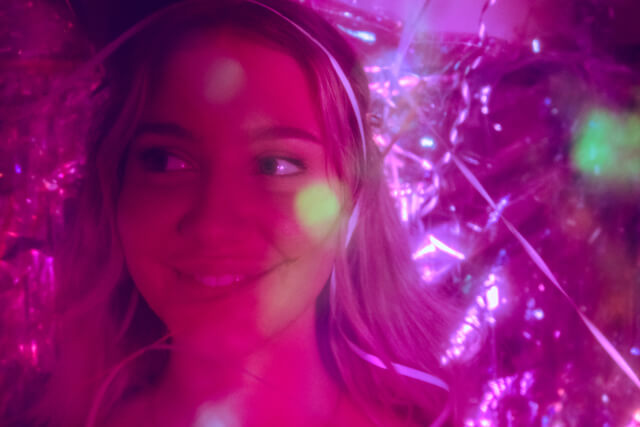
Get the pose right
Your subject and background are now ready. Now, give the subject instructions about the pose. Of course, you must tell them beforehand what vibe you want to deliver from the shoot.
Avoid overwhelming them with complicated demands. Simply ask them to make tiny, simple adjustments, such as Now look at me, Raise your chin up, or Straighten your back.
Here are some suggestions for simplifying your upcoming shoot and finding superb portrait photography poses.
- Close up straight: Photographers used this pose at the very beginning of photography. It has never gone out of style.
- Bottom-up: This pose creates bossy language. It was prominent in the 1990s and is now popular again in the retro era, featuring mainly in fashion advertising.
- Leaning head: This pose gives a sense of calm and contributes to a very soothing story. You can use it for almost any type of subject.
- 90 degrees: When the models face doesnt smile, it gives off a severe and professional vibe.
- Chin up: If you want the shot to look arrogant, bold, and sharp, take this pose.
- With flowers: Flowers convey a feeling of passion and emotion to most photographs because they are living things.
Hands near the face: Your photo will have a foggy, sorrowful, and thrilling feel. The atmosphere is authentic but not cheesy; however, this pose requires practice and experience.
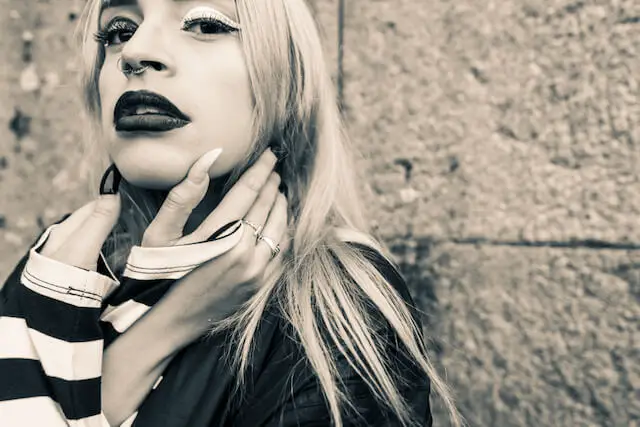
Take candid portrait photos.
A candid portrait photograph is a photo taken with the subject unaware of the photographer. Then, the emotion and action will be much more natural.
Street photographers love this style. They like taking up-close, unposed pictures of passersby. However, you can apply it to other genres, such as lifestyle portraits for wedding documentaries.
Candid photographers have shared some tips for taking a good picture:
- Dont just turn on rapid mode on the camera and start shooting. Observe your subject instead. Then, wait for the moment to portray the subjects personality and take a shot.
- When you travel and meet friendly locals, take advantage of this chance.
- Be open to unexpected meetings as possibilities may arise at any time.
- If you intend to broaden the scope of your candid portraiture, then start a project.
- You may need to hide yourself to take the photo. However, asking your subject for permission is necessary.

Capture emotions
The key to making stunning, genuinely engaging portrait shots is to capture real sensations. Beginners, however, could have trouble capturing the moment.
If you make a few mistakes at first, dont worry; you can learn a lot from it. Also helpful are the tips below.
Take a picture of your subject in a familiar setting
Photographing them in a familiar setting will make your subjects feel more at ease with the camera. You might even want to pick a place with a special meaning for your subjects and rouses a lot of emotion.
Encourage your subjects to share their stories with you. They then express affection more naturally. Adding relevant objects can also help.
Ask your subjects to do something.
When your subjects can act naturally, your photo will have genuine emotion. Ensure that the activity you select will highlight their personality.
For example, if you want to portray the connection between a guy and his dog, let them engage in games or activities that they both find enjoyable.
Wait for the important moments.
Another thing to keep in mind is to keep an eye out for opportunities to capture your subjects when they are emotional.
These circumstances can occur when you least anticipate them. But if you stay attentive, you will get it.
Keep on shooting
Perfect moments may come up when you are not ready. So the best solution is to shoot continuously to capture any moment.
Moreover, shoot a specific scene in bursts while using your cameras continuous shooting mode to ensure you have many images to select from.
Focus on other details
Pay attention to some details, and your photographs will express emotions.
For example, you can try zooming in on the subjects body language, how they hold their hands, and even their sweat or tears.
Small details are more difficult to mimic. Hence, they can give you quite efficient ways to convey what the subjects are really feeling.
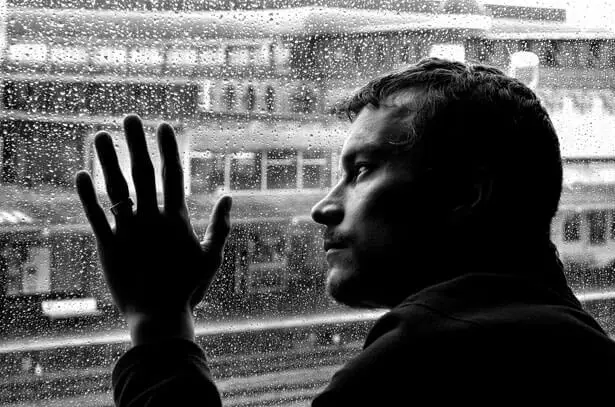
Master your camera
Its simple to set up the camera for portrait photography. Providing you keep in mind this one crucial concept: put the portraits subject front and center.
Many elements will affect how you set things up, such as whether you are snapping photos in a studio, the kind of lighting that is available, and the purpose of the shoot.
Besides, mastering the camera means understanding all the controls and knowing which case to use each. You can determine how your photo will look.
Understand the exposure triangle
We recommend working on the exposure triangle, which includes shutter speed, ISO, and aperture for the best effect.
Shutter Speed
Shutter speed wont matter much if youre in direct sunshine. To prevent a handshake, you should often choose a rate higher than 1/100th.
In order for the flash device to sync correctly, if youre using one, do not shoot faster than 1/200th.
The best shutter speed for catching motion depends on how quickly the action occurs. Shoot as slowly as you can to minimize handshake for some motion blur.
It can be around 1/50th of a second for people with a steadier hand. So trying to find your perfect speed will need some trial and error.
ISO
Remember that grain always displays more prominently at higher ISOs. You should always select a low ISO to prevent grain.
Different cameras can handle grain to a different level. Although an ISO of 800 in one lens may be clear, this figure in another camera may appear highly grainy.
You should test your camera in various lighting settings. Before you start a shoot with a subject, experiment with different ISOs.
Aperture
Since it produces a shallow depth of focus, an f-stop of 2.8 or below is the optimal aperture for portrait photos.
The viewers eye tends to follow the shallower depth because everything but the primary point is blurry. In this case, the eye should be closest to the lens.

Set a color palette
Setting a color scheme assists in deliberately creating the visual impression and appearance of your portrait photographs.
Your portrait shots will have a more substantial impact if you use complementary colors for your subjects clothing, backdrops, props, and post-processing.
Gels can be a big help for this purpose. For example:
- You may need to change the temps of your lighting if your photoshoot ends with unnatural skin colors or weird color casts.
- A CTO gel to warm the surroundings may be helpful if youre filming on a rainy day.
- Using a CTB has to cool down your photographs if they look too warm.
In general, the type of your shot determines which temperature is best. Based on the temperature, you can plan the background effectively.
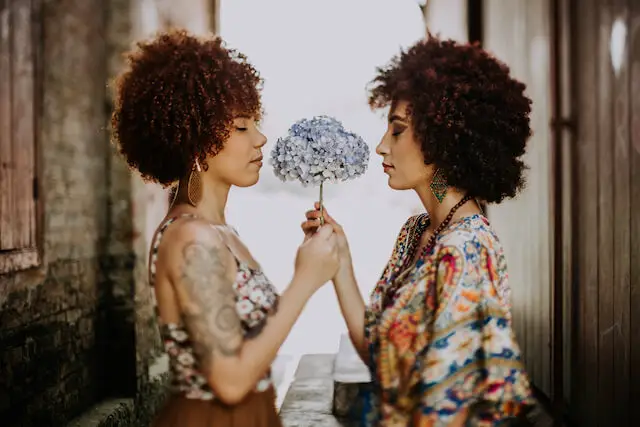
Focus on the lighting
In general, if you dont have professional studio lighting, natural sunshine is the most beautiful light source for portraits.
A day just a little bit gloomy offers a nice, warm glow that will look gorgeous on your subject. However, direct sunlight rarely works since it leaves a harsh shadow on the subjects face.
Setting the light in a studio will be much more challenging. A portrait photographer often chooses one from these ideas.
Key light
The key light is the most important, brightest, and visible in the image. It may look pretty soft in most portrait settings.
Hair light
A hair light will accent the shape of the hair and the edge detail. If you wish to separate the subject from the backdrop, use this light style.
Fill light
To reduce contrast in your image, use the fill light. It can help you highlight shadow detail in a photo with extremely dark shadows.
Side light
Split setups often come with a side-light. Because the photo only exposes one side of the models face, side lighting has a dramatic effect.
Kick light
Kick light and hair light effects are easy to confuse. A kicker may brighten up both the subjects face and one side of their hair, but a hair light will simply focus on the hair.
Rim light
Rim lights create extra background contrast while drawing attention to the subjects shape. Due to the tall and thin light pattern, we call them strip boxes.

Try with different angles.
Usually, photographers take portraits with the camera held at the models eye level. However, there are a lot of angles to experiment with.
Your portraiture can stick out using an uncommon angle if you dont arrange the settings neatly.
To find the most attractive angle for your subjects portrait, consider taking the photo from an aerial angle or the side and try different poses.

Edit the photos
To create impactful portrait photography, post-production, or the editing process, is important.
You have editing softwares, but Capture One Pro is popular in the photography industry due to its precise color reproduction, especially with skin tones.
For more detailed photo editing, Photoshop can also work. It features the liquify tools for your photos. Another common choice is Lightroom, which has a time-saving batch photo editor.
Exposure X6 also offers impressive filters and effects, while Luminar AI has facial recognition aided by artificial intelligence.
Whatever editing program you use, do not overdo it. Skin smoothing is one of those things that is simple to overuse and result in an unnatural-looking picture.
Ideas For Portrait Photography
Everything is ready for a photograph. If you want to enhance the effect of the photo, try the following tips.
Use a flattering focal length.
Because focal length adds a predictable degree of photo distortion, it significantly impacts your photos and can either enhance or derail your portrait.
By looking at the lens barrel, you can determine the lenss focal lengths. Only one focal length is available if you use a prime or fixed lens.
Turn the zoom ring to choose a focal length when using a zoom lens. If your camera doesnt have a zoom ring, use the +/- bottoms to do it.
The most accurate picture of your subject will come at a 50mm focal length. This feature creates no facial distortion.
The face features will start to deform unfairly if you photograph with a focal length of less than 50mm.
For instance, the low focal length will make your subjects nose, forehead, and cheeks look bigger. Meanwhile, features like the chin or ears seem to get smaller.
80mm, 100mm, or longer ranges are also popular in portrait photography. The longer the length, the further you have to move away from the subjects so they can fit into the frame.

Blur the background
A shallow depth of field is a particular technique to improve your portrait photography ability. Your subject will stand out since it will be in sharp focus, whereas the surrounding will look blurry.
By modifying the lenss aperture, you adjust the depth of field on the camera. The aperture lets light pass across the front of the lens to your cameras sensor.
The fundamental rule is to ensure your subjects eyes are still focused at the very least and preferably at the tip of the nose. You can test with smaller and larger aperture sizes for the best outcome.
If the background isnt blurry enough, you can move the subject further from the background. And if you want it to be clear, move the subject closer.

Expose the model’s face
Your pictures exposure affects how light or dark it is. The subjects face is the key component of the setting in portrait photography. Hence, ensure you expose it correctly-not too bright or too dark.
You may quickly adjust the cameras exposure compensation (EV) setting according to your photography mode. It gives you the option to customize the exposure.
Alternatively, choose Center-weighted metering or Spot metering as your cameras metering setting. Now, the camera ignores areas that are too bright or dark towards the edge of the scene.

Focus on the eyes
The eyes are the soul of a portrait. The model and viewer have better eye contact, creating a more dramatic and captivating photo.
Establish your focus point precisely while taking portraits, especially when using a narrow depth of field.
Numerous Autofocus points on your camera are probably visible in the viewfinder. You can use the AF setting to choose the central focus point and place it right over one of the models eyes.
To fix focus, half-press your cameras shutter button. If required, move the lens to change the composition of your shot, then tap the shutter button to snap the image.

Conclusion
Portrait photography is an enormous world of art. You will get lost in this world if you dont know exactly what to do.
So bear in mind the tips we have shared and practice every day. If you are consistent, you will create a masterpiece soon.
Thank you for reading!

